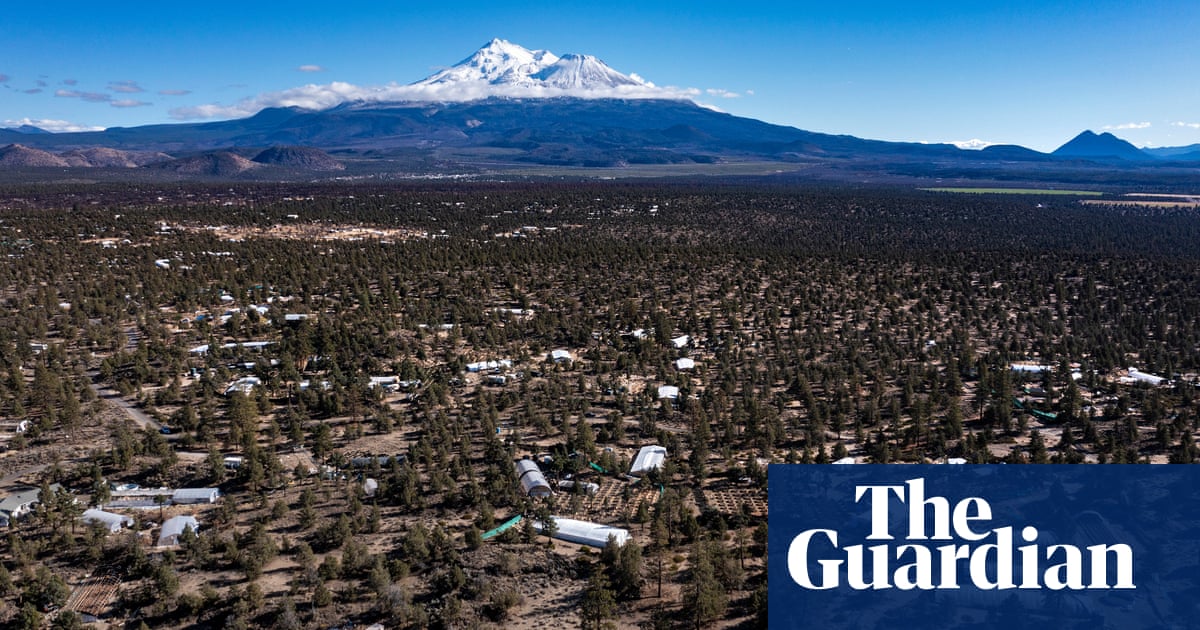In the shadow of Mount Shasta in northern California, a sea of makeshift greenhouses and plywood huts sprawls between the conifer trees of the high desert. From the air, many of the polytunnels look in bad shape, their plastic covers torn by the wind to reveal what’s inside: hundreds of cannabis plants packet tightly together, their distinctive green leaves easily identifiable against the volcanic soil.
This remote area of Siskiyou county is known for its goldrush history, black bears and returning grey wolves, but in the last few years it has also become a hub for California’s parallel market in cannabis production. More than 6,000 hectares (15,000 acres) of illicit cannabis farms cover the Republic-leaning county, which voted not to legalise commercial farming despite the statewide vote for legalisation in November 2016.
Several thousand people are thought to be living in the seasonal encampments where illicit cannabis is grown near Mount Shasta, often without an official connection to water or sewage supplies. Many producers are Hmong Americans, and tensions have erupted with law enforcement over water access, prompting accusations of racism. Trucks transporting millions of dollars worth of cannabis have been stopped on the highway, and there is growing concern among authorities about the consequences for the surrounding ecosystem.



It’s almost like it’s really difficult to regulate things you arbitrarily decide to make illegal. This sounds like a country that fucked around and is in the process of finding out.
Oh